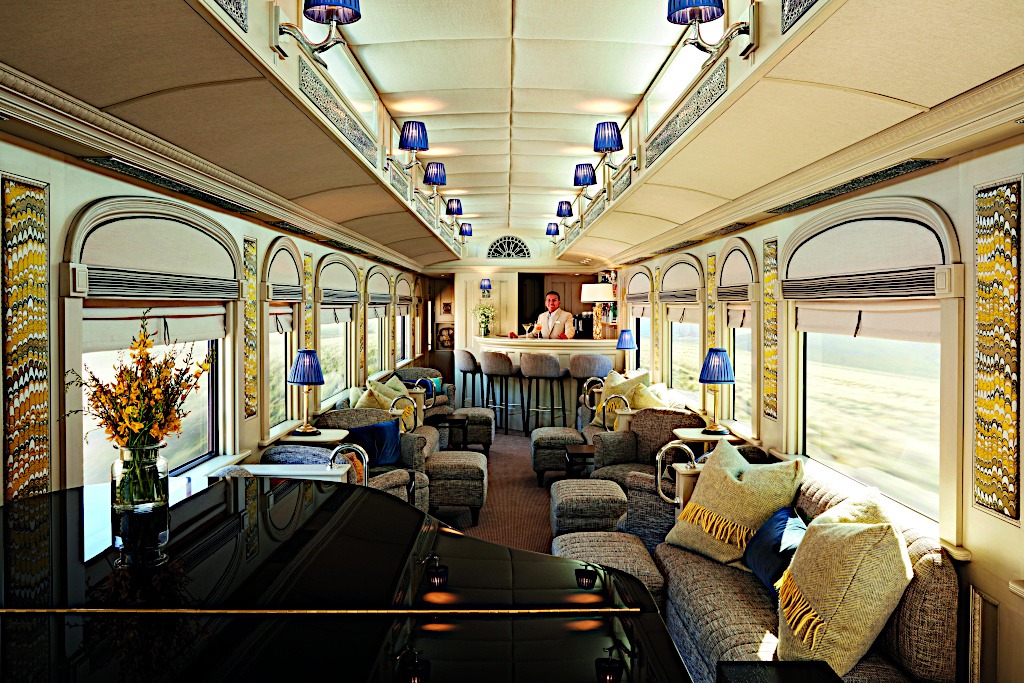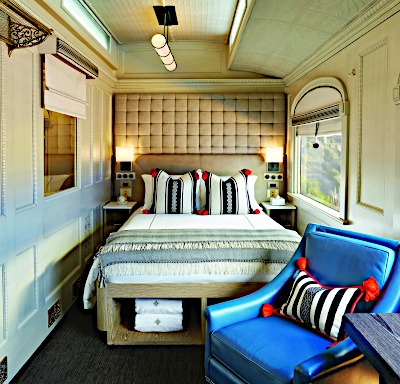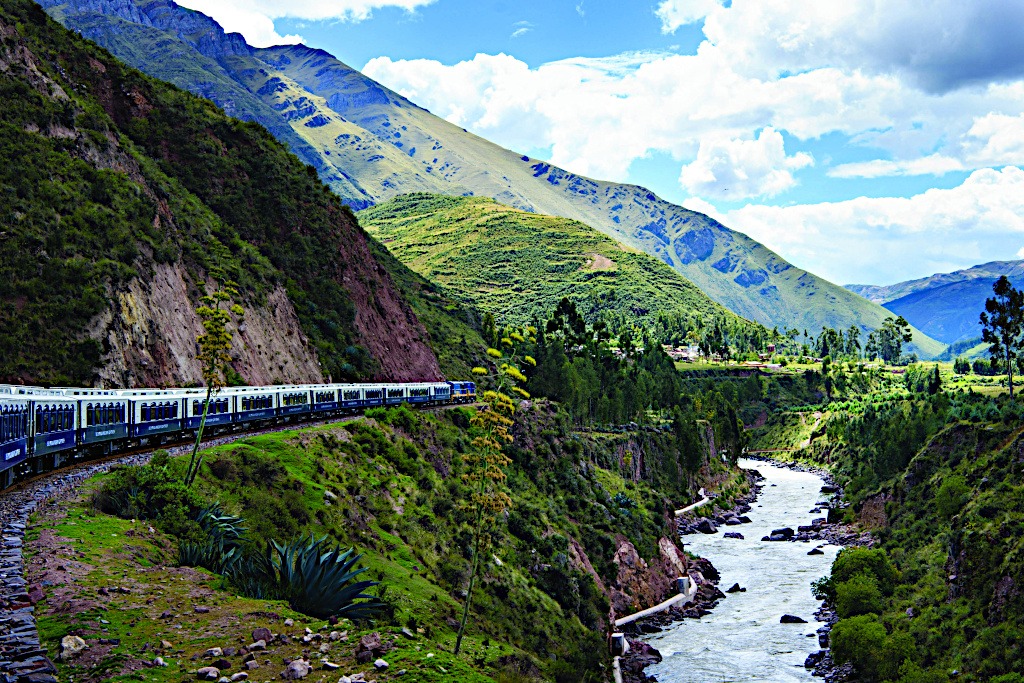Coordinating your trip is best left to the folks at Belmond (www.belmond.com). From the United States, most tourists looking to book this journey, will fly into Lima, Peru, spend a few nights, and then fly to Arequipa to board the train.
One mistake we made was flying into Arequipa on the day that the train departed. Our taxi brought us to a seemingly abandoned train station. It is not a 24-hour transportation hub, as it basically only serves as the departure point for Belmond, and, unfortunately, boarding would not occur until late that evening. If we were to do the trip again, we’d arrive the night before. But we do have all day anyway to spend time exploring this magical little city with its large plazas, an ancient monastery larger than some towns, and eating local food, including rocoto relleno, a scrumptious stuffed-pepper dish served with a cheesy side of potatoes.

Piano Lounge
When we return to the train station that evening, a band greets us in the terminal as does the dapper and charming train manager, Christopher Mendoza. He excitedly checks us in, and we’re then greeted by various staff members, including the food and beverage coordinator who makes our mouths water when she describes the menu choices for dinner.
As the pan flute pipes through the wooden structure, a screeching sound makes our heads turn. It’s our first look at the train as it passes the fogged-up windows of the station. We get up to take a peak through the window at what will be our beautiful home-away-from-home in Peru.
A red carpet is quite literally rolled out as each group is lead onto the train and brought to the piano lounge. The interior design reflects Peruvian culture, mixing vibrant colors with natural tones, and large windows that offer the perfect vantage point to view the ever-changing scenery of the Andes. In the piano lounge, lively tunes and Champagne break the awkwardness between fellow travelers as everyone sits on golden pillows that line comfy couches.
The details throughout the cars are a marvel of interior design. It’s an amalgamation of the train’s origins as a passenger train from Australia, a nod to Peruvian culture and nature, but also a swell of modern-day design and comfort. This is exemplified in the rooms. Peruvian colors and patterns line the original wood embellishments. Our double-bed room is relatively small (while others are much grander), but ours is converted into a lounge during the day where we can sit and watch the changing scenery through the massive windows.

Junior Double Bed
There are also some unique amenities, including oxygen tanks for the rapid ascent into the Andes. While we didn’t need to use the oxygen, thanks to a steady supply of ginger chewies and vitamin packs we picked up on Amazon called Flygood Probiotic High Altitude Travel Vitamin, nearly half of our train felt altitude sickness. A man from San Francisco ended up with stitches from collapsing in the bathroom in the middle of the night, forcing the train to make an impromptu stop, while others felt milder reactions like headaches and physical exhaustion.
Our first night, we relax in the Picaflor Spa car (which means ‘Hummingbird’). This railcar, one of the 18, is equipped to provide a variety of treatments with expert therapists that will keep you relaxed even as the train warbles from side-to-side as it begins its ascent to around 11,000 feet.

